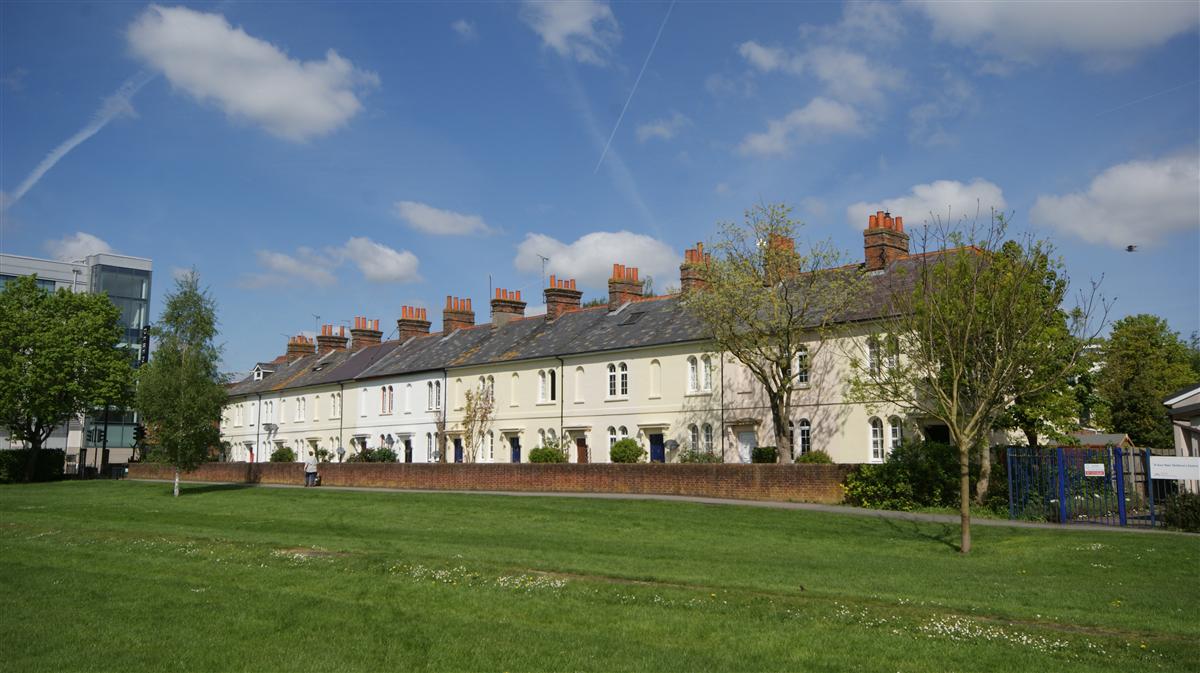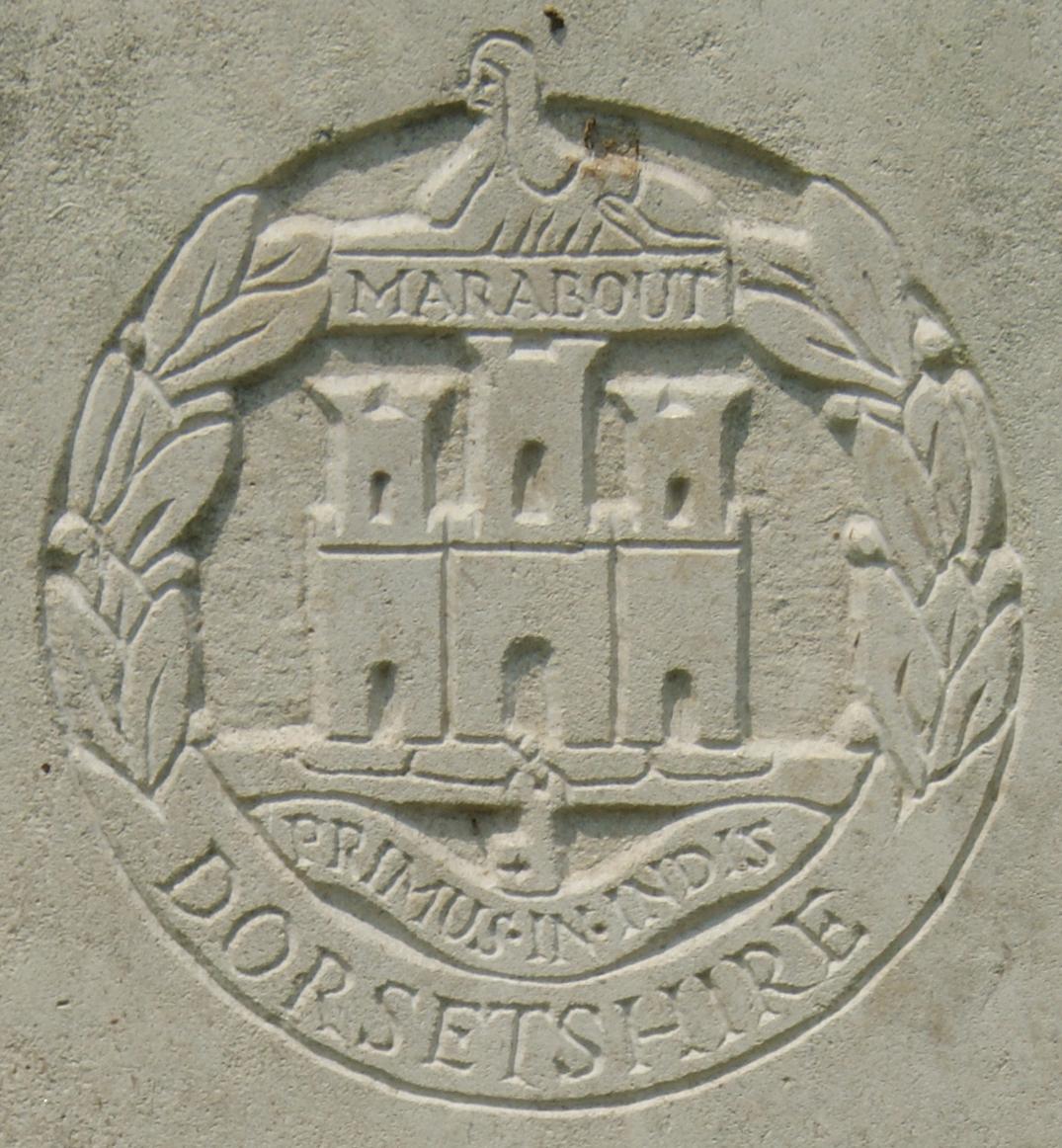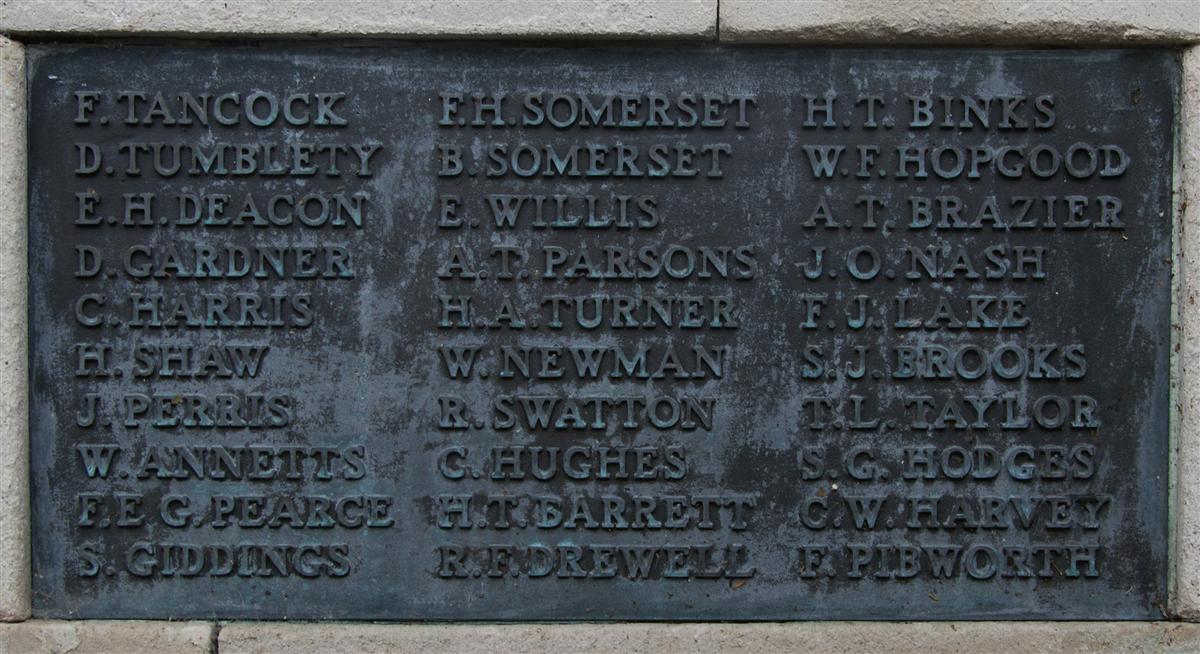Frederick John Lake
Private 31721 Frederick John Lake, 1st Battalion, Dorsetshire Regiment
Frederick (known as Fred) was born in Bitterne, near Southampton, in 1894, the fifth child, third son of William Frank Lake and his wife Alice Annie (née Hamilton). William was an engine driver from Southampton who married Alice, who came from Oxford, in London (West Ham). At the time of the 1891 census the family was living in Monmouthshire but William senior was at sea off Beachy Head on a fishing boat called the Mercutis. At this stage of his career he was working as a fireman (stoker). By 1901 the family had come ashore, landing in Newbury where William was able to use the skills learnt at sea to drive an engine, not on a railway but a stationary engine, almost certainly a steam engine in a local factory or similar.
By 1898 they were living at Albert Villa in Albert Road, which would have been very convenient if he had worked in Elliott’s furniture and woodwork factory a few steps away, but there is no evidence to show exactly where he had found employment. By the time they reached Newbury there were already five children, all born in the Southampton area, two more daughters were born in Newbury, in total there were three boys: William Hamilton, George Henry and Frederick John; and four girls: Elizabeth Emma, Annie Amy, Ethel Kathleen and Louisa Wilhelmina.

Park Terrace: the Lakes lived at No 1, which was at the far end of the terrace in this picture, but was demolished in the 1930s when Park Way was created. |
When the family came to Newbury young Fred was still a schoolboy, he went to school in Newbury at Speenhamland School, a short walk from Albert Road. After finishing school, probably aged 13, he found employment as an errand boy (or ‘errant boy’ as entered by his father on the 1911 census).
In 1915 he married Hannah Brindley in Newbury and their first child, Kathleen Beatrice arrived a few months later.
There is some confusion over Fred’s military service; the newspaper report of his death suggests he joined the Royal Engineers in 1915, but the records suggest otherwise. On 15 January 1916 he joined the Army Service Corps (ASC) Forage Department on ‘Short Service’ (3 years or duration of the war) terms. This element of the ASC’s vast logistics organisation was responsible for supply food (forage) for the hundreds of thousands of horses used to haul wagons, transport officers and, of course, mount the cavalry. At the time the Military Service Bill was passing through Parliament – and would soon become law and, for the first time, introduce conscription to Britain. Enlistment in a fodder provision organisation at this point could be seen as an astute move for one hoping to avoid being shot at or shelled on a regular basis. Even better, he seems to have been based in Reading – very close to home.
It appears that he may have been posted to the Wandsworth area, which appears as his residence in his entry in 'Soldiers who died in the Great War' - and as the birthplace of his second child, Frederick William John, in 1917. Of course it may be that Hannah made the move alone, perhaps the result of finding employment there - this could easily result in Fred's recorded address changing as it would be his next-of-kin address that the Army would hold.
On 6 November 1916 his position changed, he was discharged from the ASC ‘having enlisted in the Regular Army’. He joined the Royal Engineers (REs) in Portsmouth, the specific RE unit being given as ‘Trade Test’. This was a school where recruits would be assessed for their fitness to serve as trade specialists in the RE – perhaps, for instance, Fred was applying to be a maintenance engineer for steam engines (the sort of trade the son of an engine driver might have acquired).
However, his time with the RE was limited. It is not known when he left them, but, at some point, he transferred to the infantry, specifically the 1st Battalion of the Dorset Regiment. This could have been the result of failing Trade School, but was probably more likely to have been the result of the desperate need for infantry following the huge losses experienced during the German’s offensive in the spring of 1918. The BEF in France was almost defeated by the German assault; as a result the Government reduced the age limit on service at the front down from 19 to 18½ years old – no doubt the Army would also pull in all its fit and able men working in less vital capacities.

The regimental badge of the Dorsethire Regiment, as used on CWGC headstones. |
A week later, on 8 August 1918 the British began an offensive that was to finally break the German army; from this day until the Armistice came into effect on 11 November the Allies moved forward towards Germany itself. However, despite the overwhelming superiority of the Allies in all respects: manpower, technology, supplies and tactics; the Germans did not stop fighting and killing. British casualties on a daily average basis were as high as any other phase of the war.
On 26 August the 1st Dorsets moved forward into the line, their turn to assault the enemy was imminent. They were between Herreville and Soyecourt to the south of the River Somme, advancing through territory captured by the Germans in their Spring Offensive a few months earlier. The battalion war diary tells the story of the following day:
War Diary: 1st Battalion, Dorsetshire Regiment
27 Aug 1918 Hostile artillery was very active at 3.45am and continued shelling B Coy lines till 5am, the Coy having 4OR wounded. At 8.30am information was received that the 96th Bde on right was advancing and our front Companies immediately endeavoured to go forward, but were held up by Field and Machine Gun Fire. To enable A and B Coys to conform to the movements of the 96th Bde, the support Coy D was ordered to work through STARRY WOOD from the SOUTH with BORDER REGT the left Bn of the 96th Bde. A and B Coys finally occupied a trench system N and E of STARRY WOOD and C Coy (Reserve) got into position in the old front line. At 3pm Bn Hd Qrs moved forward to SORIEN ALLEY and at 5pm Major G H MORRIS MC received orders from the Commanding Officer to take command of the 3 front companies and work up trench system with SOYECOURT as his objective. Severe shelling, from which A Coy suffered heavy casualties necessitated reorganisation but by 8.30pm these Coys had pushed forward to the position S3.c.9.2-S3.c.6.8 where they were held up by Mashine and Light Field Gun Fire. Casualties: Lt C E SALTER wounded. OR: Killed 7, Wounded 13, Missing 3. At 11.50pm orders were received that the Bn would continue to advance at 5am EAST of SOYECOURT and maintain touch with the enemy.
Fred was one of the casualties of that day; his body was never identified, suggesting that he was probably the victim of shellfire. As he has no known grave his name is remembered on the Vis-en-Artois Memorial – some distance from where he fell, but this is the memorial to the missing from the ‘Advance to Victory’ from August to November 1918.
Fred’s death was announced in the local paper:
Newbury Weekly News, 26 September 1918 – Killed in Action
LAKE – Aug 27, killed in action, in France, L-Cpl Fred Lake, Dorset Regt, youngest son of Mr and Mrs Lake, Park Terrace, Victoria Park, aged 27 years.
Sleep on dear son in a lonely grave,
A grave we shall never see;
But as long as life and memory lasts,
We shall remember thee.
From his devoted Father, Mother, Sisters and Brother.
With a little more information in the newspaper's column on the activities of local lads serving their country:
Newbury Weekly News, 26 September 1918 – Local War Notes
Mr and Mrs W Lake, of 1 Park Terrace, Victoria Park, have been informed of the death of their youngest son, Lce-Corporal Fred Lake, aged 27, of the Dorset Regt. He was killed in action after only 27 days service in France. He joined the Royal Engineers, and had served three years in England.

Fred's name on Newbury War Memorial (middle right) |
Locally Fred is remembered on Tablet 13 of the Newbury Town War Memorial, the memorial board and roll of honour in St Nicolas’ Church, Newbury. He was also remembered on the long lost memorial board at Speenhamland School .
His elder brother, William, was also a casualty of this war, dying in captivity in Anatolia, Turkey, after being captured at the fall of Kut in 1916.
Unusually the two brothers’ names are not recorded together on the Newbury memorial (William is on Tablet 3, Fred on 13); although the names were deliberately scattered randomly across the bronze tablets the names of brothers were generally kept together.

Find a memorial :
| Died this day: | |
| 15 January 1943 | |
| L C Lawrence | |
| Newbury |

Like this site? Show your appreciation through a donation to a great charity.